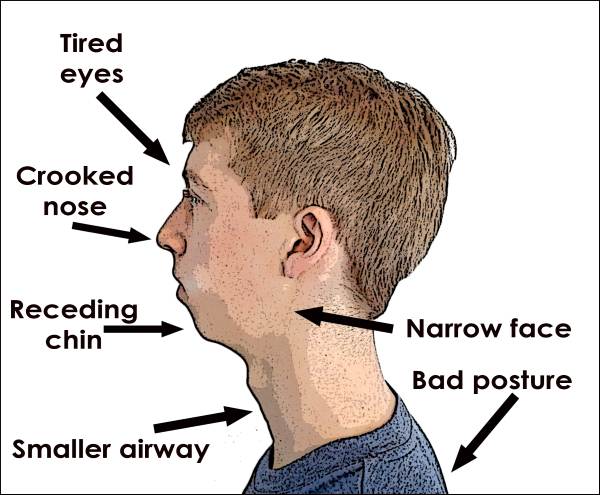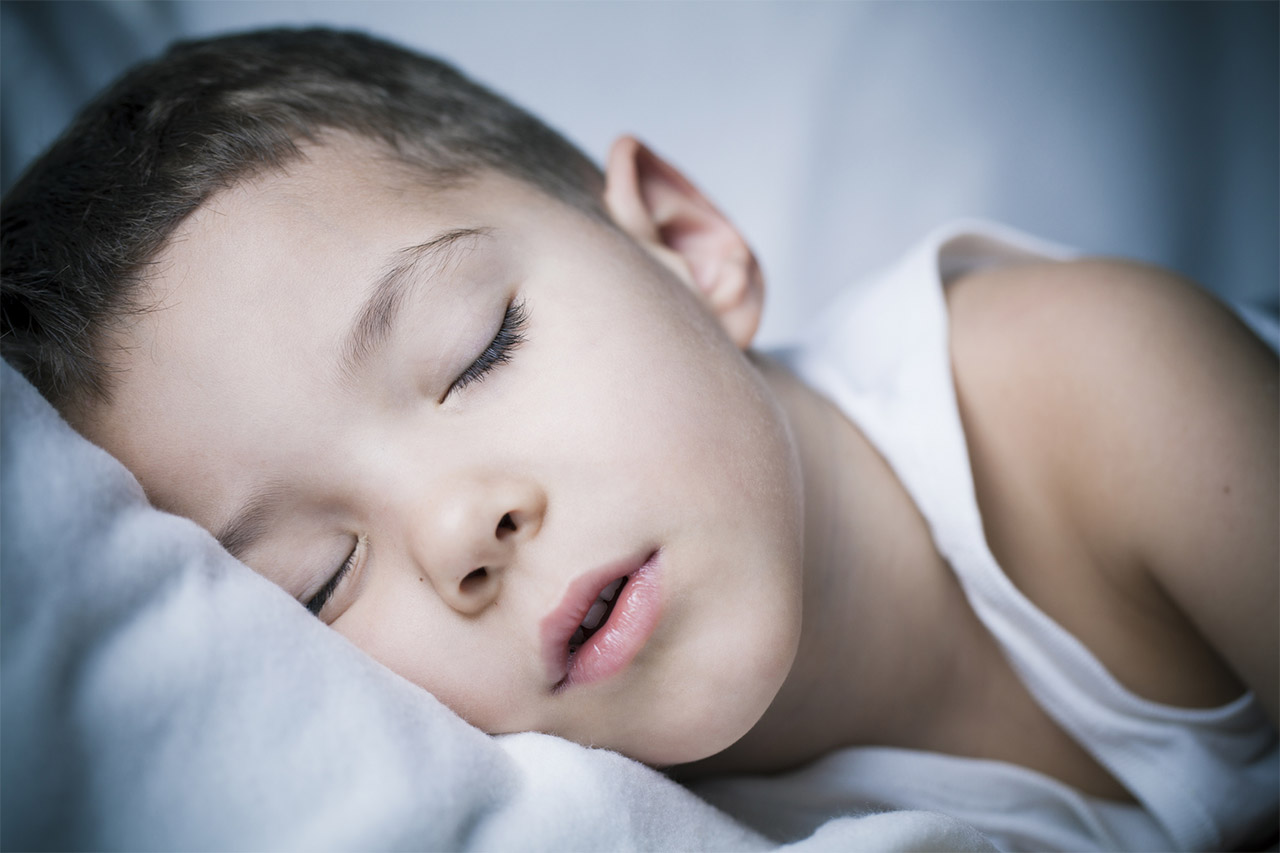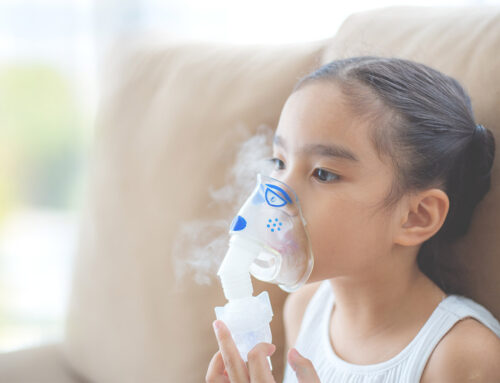I’ve covered the subject of mouth breathing quite a few times on this site, and for good reason. There are so many negative health consequences to breathing through the mouth, but sadly, they’ve generally been missed or ignored by mainstream medicine.
Thank goodness that this is starting to change, and more practitioners and medical professionals are addressing mouth breathing and its connection to health. However, there’s another part of the mouth breathing equation that also doesn’t get mentioned enough, and that’s appearance.
An Open Mouth Has Real Effects On Appearance
Doctors and dentists have known for a long time that an open mouth can have a serious effect on the way we look. The term “adenoid face” has been in common use for well over a hundred years to describe a particular type of facial appearance.
Usually this is seen as a long and narrow face with a high arched palate and associated dental crowding.
The reason this happens is that children who suffer from chronic nasal congestion (from enlarged adenoids, tonsils, allergies, colds etc.) breathe through the mouth, which in turns leads to the development of a tongue thrust swallowing pattern and a low-resting tongue.
The Bottom Line About Children Who Have An Open Mouth
What it comes down to is this: If a child grows up with an open mouth, their facial features will look different than a child who grows up with their mouth closed. It’s that simple.
All parents should know that an open mouth or mouth breathing are abnormal in a child, and will affect their dental and facial growth and development.
Look For The “Two L’s”
The Two L’s are:
- Lips apart
- Low tongue
If your child’s lips are apart and their tongue is resting low in their mouth, then you have reason to worry. Over a long enough timeline, these two factors will change the shape of the face and jaw, and will affect the placement of the teeth as well.
This happens because the tongue acts as nature’s braces, guiding growth and development. Having the tongue in the correct place is what encourages the forward facial growth of the maxilla (the top part of the jaw) but when the tongue is low, the face will tend to grow downwards.
I see this all the time in my younger patients who mouth breathe. Sadly, I also see it in adults. The children who mouth breathe become the adults with long faces and health problems. I often get contacted by adult patients who are terribly unhappy with their facial appearance. Some of them have had orthodontic expansion, or braces multiple times. Others have resorted to complicated and difficult facial surgery to try to change the way they look.
Believe it or not, an open mouth and a low-resting tongue can also have dramatic effects on posture, resulting in rolled-forward shoulders and a neck that tilts forwards. With the current focus on posture, and an increasing awareness of how your posture can affect your body, this is definitely something to pay attention to.
Your Genetics Dictate The Outcome
Breathing through the mouth as a child will affect everyone to one degree or another but a lot of the outcome depends on genetics. If you come from a family with strong jawlines and well-balanced features, then the effects on your child’s appearance might not be terribly obvious (even though they’ll still be there).

Some of the potential effects of a mouth breathing habit.
If on the other hand, your family has passed on a narrow facial structure and a weaker jawline, then it’s entirely possible that the effects of a mouth breathing habit on your child’s appearance will be profound.
How Do You Change This?
The first step is to try to avoid developing an open mouth habit in the first place. As I said in this article about winter colds, “…the most important thing I can suggest is to breathe through your nose no matter what! This is even more relevant for your kids, so do whatever you have to maintain nasal breathing”.
If your child has an open mouth, then you need to get a diagnosis as soon as possible, so you can address what’s causing it. Whether it’s an allergy to something like dairy, dust or dander, a long stretch of chronic nasal congestion, or something more serious that needs the attention of a doctor or ENT, you have to find a way to clear the nasal passages so it becomes easy to breathe through the nose. I work with all my patients in conjunction with their doctors to address these issues.
Once that’s addressed, you need to consider if a mouth breathing habit has in fact set in. If the lips are apart and the tongue is resting low, then it has set in. You’ll need to work with a myofunctional therapist who’s experienced in treating children. This treatment can start at a surprisingly young age, in fact, the sooner the better.
The Age Groups
While we can’t expect really young children to closely follow an oral exercise program, it’s definitely possible to make the treatment fun and exciting for them, which means they get good results. I work with parents of children as young as three years of age, so there’s no reason to wait.
Older children and teenagers find it easier to follow a weekly treatment program, and they get excellent results too because at that age, the facial structure is still flexible enough to move.
Even my adult patients notice some changes to their appearance over the course of their therapy programs, especially the patients who are dedicated and practice their exercises exactly as prescribed.
The physical appearance and cosmetic problems that result from a mouth breathing habit are important to most parents but as I always tell my patients, they’re only signs of an underlying health problem. The health-related symptoms are far more important than any appearance or cosmetic issues because they can have such serious consequences in childhood and later in life.
The effects of a mouth breathing habit that starts in childhood don’t have to last for a lifetime. It’s possible to address them in a way that’ll make a massive difference if you approach the problem correctly – myofunctional therapy is very effective at treating this type of condition. So if you’d like to chat about myofunctional therapy for your children, I’d be happy to meet with you on Skype for a free 30-minute assessment. Let’s answer all your questions and try to get you some long-term peace of mind. Please contact me here and we can set up an appointment.




